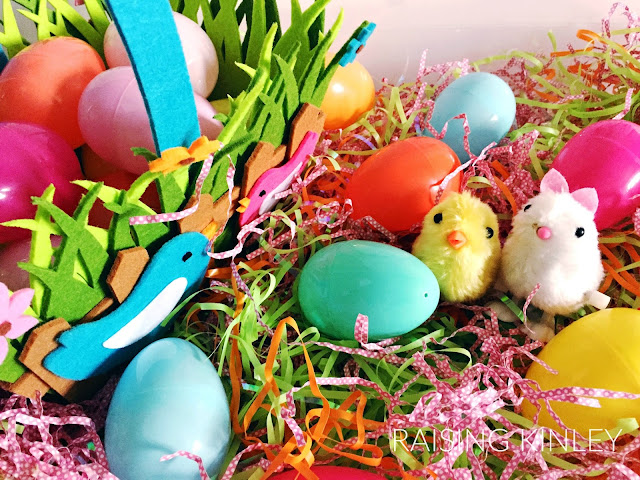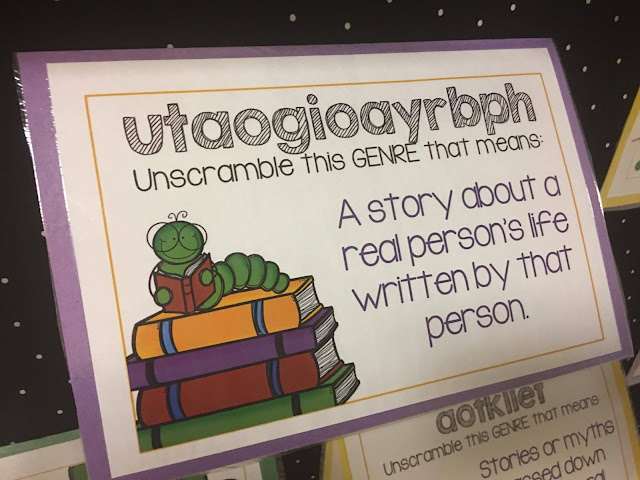Happy Spring, y'all! I'm Karen from Little Smarticle Particles, and I'm thrilled that Denise is letting me share some fun ideas for teaching and learning about life cycles with your little ones.
First of all... do you think you are not a "science person"? No problem. Children are naturally curious about the world around them, so science concepts are a natural fit (especially when it comes to critters).
Secondly...(I have to get on my soapbox for a moment), as a veteran teacher and a mother of grown children, I have to tell you that the most important thing that you can do for your children is to talk to them. Have conversations. Listen to them. Stop and show them stuff and explain how it works. You don't have to be technical. It is my firm belief that when parents talk to their children and read to them (daily!), they are setting them up for academic success.
But I know you already do this. How do I know, you ask? Because you are already a step ahead of the game by visiting Buck & Chuck!
So... let's get this party started. I have found that one of the best ways to get things rolling is with a good read aloud. I happen to love just about any book by Gail Gibbons. She is my go-to author for all things non-fiction. She is also the illustrator, and she labels her illustrations... (yay! as a science teacher, I'm all about the labeling).



I hope you enjoyed my post... have fun learning and exploring with your little one!
First of all... do you think you are not a "science person"? No problem. Children are naturally curious about the world around them, so science concepts are a natural fit (especially when it comes to critters).
Secondly...(I have to get on my soapbox for a moment), as a veteran teacher and a mother of grown children, I have to tell you that the most important thing that you can do for your children is to talk to them. Have conversations. Listen to them. Stop and show them stuff and explain how it works. You don't have to be technical. It is my firm belief that when parents talk to their children and read to them (daily!), they are setting them up for academic success.
But I know you already do this. How do I know, you ask? Because you are already a step ahead of the game by visiting Buck & Chuck!
So... let's get this party started. I have found that one of the best ways to get things rolling is with a good read aloud. I happen to love just about any book by Gail Gibbons. She is my go-to author for all things non-fiction. She is also the illustrator, and she labels her illustrations... (yay! as a science teacher, I'm all about the labeling).
 |
| Affiliate Links: |
Let me backtrack for a moment. When my children were small I read to the regularly. I love to read, and I wanted to them to love to read as well. But, what I noticed was that each of my two children were very different. My daughter could sit in my lap all day and be read to, while my son would only sit still for so long. Sound familiar?
So here's the secret: adapt to them. If they can sit for a while, read the text word for word. Track the text with your finger and take time to discuss the pictures. If you have a little one that doesn't sit still for long then summarize. Hit the highlights. Look at the pictures and describe what is on the page. Ask them questions and let them ask you questions. If you don't get the entire book read, no worries. Read it in chunks. A little here, a little there.
Another fun idea for teaching young children is with play. I saw these fun toys at a workshop and knew I had to have them. Luckily I won a door prize and got to pick what I wanted. Yay!!


When you talk about these toys, be sure to use the words hatchling, chick, chicken, and hen. It won't be long until you notice that when they play with them, they will also be using the proper vocabulary. You can always ask questions that lead your kiddo to sequence the the figurines with the words first, next, last, finally, etc... Your kiddo will be learning valuable skills that go way beyond just knowing about life cycles! These life cycle toys are from Safariology. They also have sets available for butterflies, ladybugs, frogs, plants, and quite a few more.
While I love my Safariology toys, at $9.99 a set, they can get a bit pricey. So...how about a freebie?
I've created a set of sequencing life cycle cards for chickens, frogs, and butterflies. Each card also has an arrow that can be cut out. Use these arrows to arrange the cards in sequential order and reinforce the concept that a cycle happens over and over. Just copy them on cardstock, cut, and your ready to go!

I hope you enjoyed my post... have fun learning and exploring with your little one!
Karen





















































